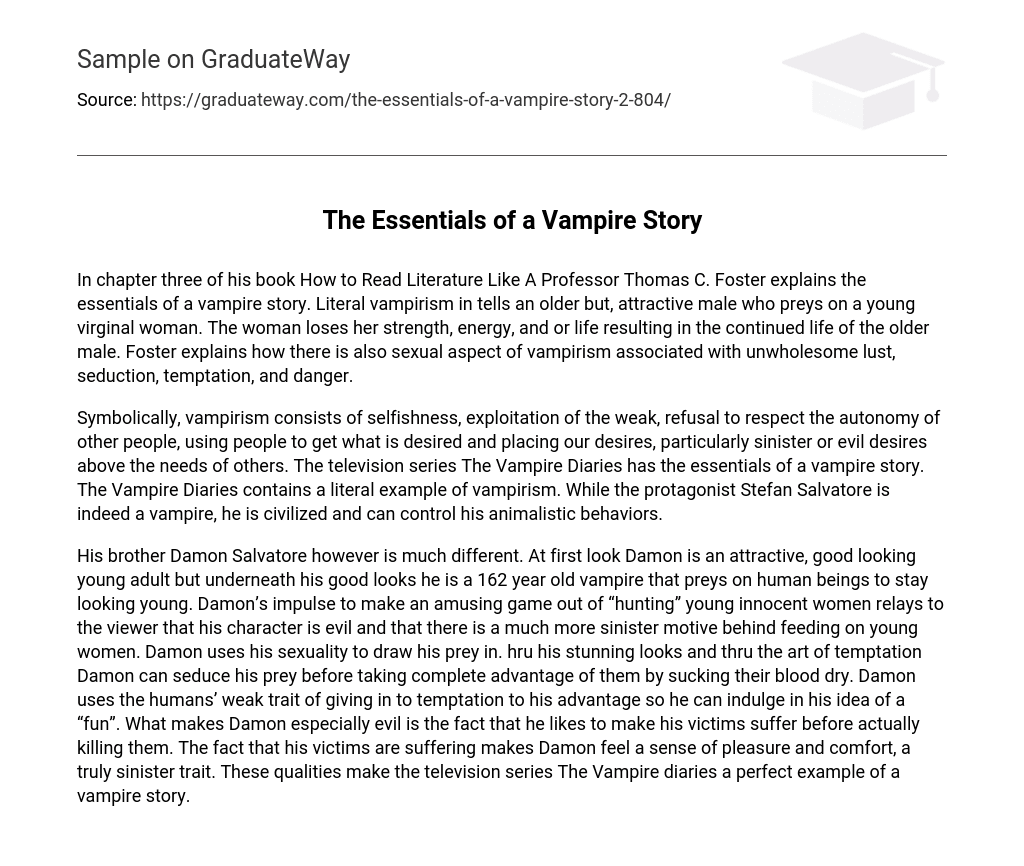In chapter three of his book How to Read Literature Like A Professor Thomas C. Foster explains the essentials of a vampire story. Literal vampirism in tells an older but, attractive male who preys on a young virginal woman. The woman loses her strength, energy, and or life resulting in the continued life of the older male. Foster explains how there is also sexual aspect of vampirism associated with unwholesome lust, seduction, temptation, and danger.
Symbolically, vampirism consists of selfishness, exploitation of the weak, refusal to respect the autonomy of other people, using people to get what is desired and placing our desires, particularly sinister or evil desires above the needs of others. The television series The Vampire Diaries has the essentials of a vampire story. The Vampire Diaries contains a literal example of vampirism. While the protagonist Stefan Salvatore is indeed a vampire, he is civilized and can control his animalistic behaviors.
His brother Damon Salvatore however is much different. At first look Damon is an attractive, good looking young adult but underneath his good looks he is a 162 year old vampire that preys on human beings to stay looking young. Damon’s impulse to make an amusing game out of “hunting” young innocent women relays to the viewer that his character is evil and that there is a much more sinister motive behind feeding on young women. Damon uses his sexuality to draw his prey in. hru his stunning looks and thru the art of temptation Damon can seduce his prey before taking complete advantage of them by sucking their blood dry. Damon uses the humans’ weak trait of giving in to temptation to his advantage so he can indulge in his idea of a “fun”. What makes Damon especially evil is the fact that he likes to make his victims suffer before actually killing them. The fact that his victims are suffering makes Damon feel a sense of pleasure and comfort, a truly sinister trait. These qualities make the television series The Vampire diaries a perfect example of a vampire story.





